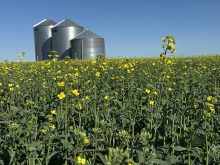The earthquake and tsunami that devastated coastal areas in many south Asian countries Dec. 26 so far has had little impact on agricultural commodity markets.
The wave killed more than 140,000 people, devastated the lives of millions more and destroyed many fishing villages and resort developments.
But south Asia’s major crop producing areas are inland and were not affected by the killer wave. Also, the tsunami’s destructive power missed almost all major ports so ship traffic was not affected.
There is a food and drinking water crisis in the area, but the problem is largely related to logistics Ñ how to get it to those who need it Ñ not actual shortages.
Read Also

Huge Black Sea flax crop to provide stiff competition
Russia and Kazakhstan harvested huge flax crops and will be providing stiff competition in China and the EU.
Large quantities of food aid will be delivered, but most will be emergency rations, not raw grain and oilseeds.
The waves did not hit countries with Asia’s biggest economies Ñ China, Japan, South Korea and Taiwan.
Hard hit were Indonesia, Malaysia, Thailand and Sri Lanka, as was southeastern India and some small island nations, but the damaged areas are not critical to world commerce.
It is a humanitarian disaster that cries out for a compassionate response by all who can afford to help, but its impact on the world’s economy and on commodity markets will probably be limited.
Indeed, most grain and oilseed prices on North American commodity markets drifted lower over the Christmas and New Year’s period.
There were no major world weather developments to threaten southern hemisphere crops.
There is some concern about a lack of rain in southern Brazil’s soybean areas, but other areas in the country got rain and Argentina’s soybean area is enjoying good weather.
Argentina’s wheat harvest was about 82 percent harvested as of Jan. 3, in line with last year’s progress.
















